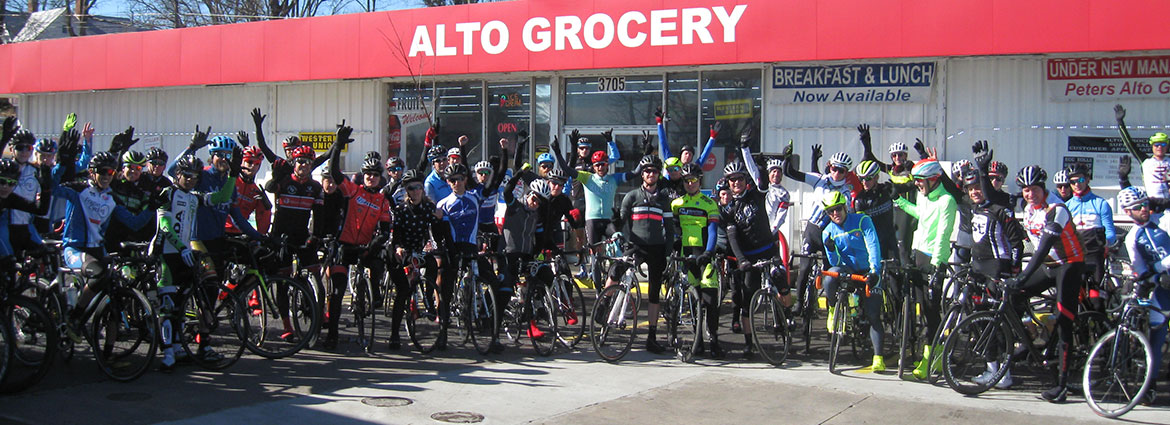The Cranberry Diaries: Chapter 1
The Cranberry Diaries (Part 1)
Erin’s and Jeff’s Most Excellent Peruvian Adventure
Day 1: To Lima
Our story begins when Jeff Shirey looked into Erin Winter’s eyes and said I do. Erin said me too, and they each slid a golden band on the other’s finger. After repeating the matrimonial vows, the two newlyweds decided to celebrate their honeymoon with a high altitude trek in the Northern Andes of Peru. I, your humble Chronicler, made arrangements for the trekking adventure with my Peruvian connection, my southern compadre, the erstwhile American mountain goat, Skipper Spangenburg. Naturally, I invited myself on the couple’s Peruvian excursion and even managed to inveigle my corpus delecti into the honeymoon suite, hoping I might catch a glimpse of the two in flagrante delicto. (Unfortunately, Mama Mesa, our Peruvian Godmother in Juaraz, nixed my plans by putting us in three single beds.) On June 30, 2005, we boarded a plane in Atlanta, Georgia bound for Lima, Peru. Seven long hours later, the Delta jet carrying us touched down in Lima. Our most excellent honeymoon was officially underway: Game on!
Skipper Spangenburg has been a guide in Peru for seven years and had established many connections in the land of the Incas. Skipper arranged for a private shuttle from the Lima airport to a fine house in a nice suburb of this sprawling city where the three of us would bed for the evening. Rudy Kayser, a fifty-year old Peruvian national with a German mother and a deceased Peruvian Father, met us at the front door with a broad smile. He grabbed our bags and lead us through a door in an outside wall and into a second door in a huge, labyrinthine house with corridors spreading out like the catacombs underneath the Pope’s pad. Rudy navigated the corridors with ease, stepped up one flight of stairs, and stashed us safe and sound into a clean apartment at the rear of the house. It had been a long day of travel—it was midnight. We celebrated our honeymoon by swilling our first ever cerveza in the southern hemisphere. We toasted Rudy as well as our most excellent honeymoon: clink-clink-clink: Salud! Then we hit the hay like ye ole ton o’ bricks. Sleep can easy; we were at sea level. Tomorrow, things would abruptly change.
Day 2: To Juaraz
Our six eyelids popped open the next morning at first light. We joined Rudy’s German mother at the big table for a breakfast of bread, butter, ham, cheese, juice and “kaffe” while Beethoven (or one of his touched compatriots) conducted a large orchestra in the background. Erin and Jeff talked with Rudy’s mom in Spanish. They laughed and conversed like old family friends while I sat mute, smiling and nodding my head like a jackass, always trying to keep a chunk of bread stuffed into my mouth. I didn’t know what the hell anyone was saying. I said gracias, the one Spanish word I knew, 39 times in an effort to blend in. I’m afraid I stuck out like a non-Spanish speaking white man in a South American country, which is exactly what I was.
In an open courtyard at the rear of the house that was surrounded by a high brick wall Rudy’s mom kept a pet turtle and a cage full of squawking parakeets. A large and overfriendly dog had the run of the house. The parakeets were nursing young ones, and when Rudy’s mom pressed her face to their cage, they squawked like a pampered pack of pro cyclists. The turtle was hidden under a bush in the backyard, but the big, curious dog sniffed it out. During our visit, Rover took quite a shine to Erin, much to the dismay of her husband.
Rudy spoke perfect English—he lived in Seattle for a year working at Wenchell’s and learning the art of making donuts. He made and sold donuts in Lima now for a living. Rudy and his mom were as sweet as powdered sugar, and the $15 dollars charged for the apartment in their house felt like stealing. Before we left, we asked about a black-and-white photo of an angelic looking, uniformed man hanging on the wall. Rudy’s mom’s eyes sparkled. She said he was her brother, a German pilot shot down and killed in 1945. Curious.
After bidding adieu to the Kayser household, the three of us shuttled to the bus station where we began the second leg of our journey: a seven-hour bus ride from Lima to the mountain town of Juaraz which sat 10,700 feet higher up. Skipper planned to meet us in Juaraz. We would traverse a 14,000-foot pass on the way to our mountaintop getaway, but no worries, we’d all been to Colorado.
We traveled aboard a luxury bus equipped with a stewardess, a first for all of us. Movies played over several video monitors and the large, reclining seats guaranteed a relaxing trip, or so we thought. The bus was filled with 30 or more gringos and we traveled north for several hours, skirting the coast via the Panamericana Highway. The famous winter Lima fog enveloped the bus, the town, and the entire route along the coastal byway. The day was dingy gray. The scorching South American sun that we’d been warned about was nowhere to be seen, hiding somewhere behind the smoky haze above us.
The suburbs of Lima are a series of shabby shantytowns pressed one against the other. They line the Panamericana Highway for miles upon miles upon miles. Cardboard houses were dug into the dirty hillsides and stacked one on top of the other, and the nicest structures were made of mud brick. There didn’t appear to be running water or electricity in many of the shacks. The shantytown habitués were all dressed in well-worn western-style wear and were scurrying about making preparations for the day. Each shantytown had its on name, some prominently displayed on an intricate wrought iron arch that marked the entrance to that particular town. The shantytowns were so big that had they been in New York City, each would have been called a borough.
We traveled for at least two solid hours before we were able to move beyond the shantytowns and see the first bare patch of dirt. Moving beyond the suburbs of Lima, we were able to see the desert environs of the coast. We saw many irrigated fields sustaining square plots of corn and beans, but mostly there were acres and acres of dirt, many enclosed by a rock or mud brick wall. The expanse of the desert sand was interrupted periodically by small cites with dirty, blue and lime colored buildings and dirt floors. It was obvious the Peruvians who lived along this long stretch of coastal road were all from the same class: the working one. None of these residents along the Panamericana Highway had ever lived a life of leisure or gone on holiday. Life was a struggle and the toil of the daily battle was clearly visible on their sun-browned faces, even from the lofty sanctuary of our bus.
We also noticed that most of the mud brick houses and concrete block buildings remained unfinished. Exposed rebar pointed upwards like a jumble of rooftop antenna. Many second floors were left roofless and exposed to the weather. We assumed everyone just ran out of money. Only later, when we witnessed the same odd tangle of rebar in Juaraz, did we learn the reason for this curious feat of engineering: An owner didn’t have to pay taxes until his or her structure was complete. No one ever finished a building completely. When the taxman came-a-calling, the exposed rebar was proof the structure was not complete. Shirey indicated he was going to try the trick back home. Communist. After four hours of traveling north along the Panamericana Highway, we turned east towards the Andes Mountains. According to the roadside sign, it was only 200 kilometers to Juaraz. Hallelujah!
After turning, we began the longest sustained climb any of we three honeymooners had ever been on in our lives. The road climbed upwards at a constant slope of 6 to 8% for the next 120 kilometers (about 70 miles). Within minutes of climbing we burst through the fog and into the bright sunshine. My spirit soared. Oh happy day. No wonder the Incas worshipped the sun.
The climb was dotted with more mud brick houses. Children sat on the stoops, small burros were tethered in the field, and farmers hoeing on the steep, terraced slopes stopped to stare as the big behemoth we rode in rumbled by grinding its gears up the monster climb. At points, hectares of purple and red chili peppers dried in the sun and golden corncobs, skinned of the kernels, were spread over a few fields. Fertilizer? The glacial cut through which we climbed was dust dry, but a constant stream of water rushed downwards from the melting glaciers, and was spread throughout the valley by an intricate web of irrigation canals and ditches. Large, flat stones that could be raised or lowered by a rope and a pulley controlled the flow of water into individual fields, homes and communities. There was no city water in these parts; neither was there electricity or phones. It had to take a communal effort, what Atlanta lawyers would call a joint venture, to work out an acceptable plan for the disbursement of H20 from the top of the mountain all the way down to the valley floor fifty miles away. Since these irrigation ditches and canals looked as if they had been dug long before my brief stint on earth, I assumed a master plan had been agreed upon. Water in these parts meant life and death, literally.
We also spied our first of many stone and straw shelters on the climb into the clouds. I thought these ancient shelters were for the animals until I saw a local lady hoist a large cloth bundle from her back and enter one of the little rock igloos. I also noticed a thin wisp of smoke trailing skyward from a small opening in the thatched roof of the rock igloo she entered. Home, sweet home.
Our bus climbed and climbed and climbed. I assumed we had passed through the clouds and were now headed straight for the sun. Our road above us wended its way back and forth, meandering its way up and across the deep valley. Our road looked like a piece of Pantagrulean twine discarded by a giant. The view was so magnificent that at first I ignored the gentle pressure on the inside of my temples. But as we climbed higher, it began to feel as if a vice were on the inside of my head, pressing tighter and tighter against my skull. Then, as the bus rolled from side to side, turning to the left then back to the right again, my stomach began doing somersaults, flips and twists. And on and on we climbed to the sun. I began to turn a pale shade of green. I was heartbroken, defeated, but I kept quiet. I didn’t want anyone to know that I was a failure. Then, the other gringos on the bus began to whimper and pule. Everyone on the bus began to complain about their pounding headaches and their rumbling stomachs. I felt much better about myself knowing that other losers surrounded me. Misery loves company, and so do complete and utter failures. Suddenly, little Mrs. Erin Winter, who was sitting in the seat in front of me, turned around in her seat, smiled and said, “I feel fine. How about you?” At this point in the story, I decided I would have to crush her like a bug under my boot on the biggest and baddest climb of the entire honeymoon. Behind her back, Shirey smiled at me. He was green too. I am sure he was thinking the same thing that I was. I was glad he was learning to do things behind his wife’s back, otherwise, women might take over the world.
After over two hours of constant climbing, the bus crested the pass and the jagged, snowcapped peaks of the Cordillera Huayhuash (why-wash) thrust upwards across the horizon: Yerupaja, Rasac, Rondoy—many peaks over twenty thousand feet, with Yerupaja the tallest in the Cordillera Huayhuash range, the second tallest in Peru, at 21,766 feet. Today we kept the peaks at a distance; we would return to this juncture in the road in less than two days.
We began our fifty-mile descent to Juaraz. I had not died. Chipper Mrs. Winter was prating away like a popinjay. This chipper little bird would pay. I looked at Shirey and nodded. He seemed to understand. One hour later we rolled into the bus station. It was dark—another full day of travel. I jotted down a thought in my journal: “Getting to out-of-the-way places sure takes a helluva long time.” Skip and fellow South Carolinian, Thomas Gray, were waiting at the station. Skip towered above the locals by a foot. We gave intros all around, unloaded our bags, and walked a block-and-a-half to Mama’s place. At last, we could cool our heels.
Mama Mesa’s home was huge, and was more than just a house. The front door opened right onto the street. We were located in the heart of Juaraz. In the front of the building, there was a large café/coffee shop with a ceiling two stories high. Wooden rafters hung from the roof. Big wooden beams were solidly locked into place and the main section of the cafe was furnished with a thirty foot long wooden bar with stools. The seating area in front of the bar was more like a large den with big, comfortable chairs rather than a formal restaurant. Group seating at large tables was available upstairs in the loft overlooking the main floor of the café. Tables were also outside on the second floor balcony overlooking the street. A gift shop and a well-stocked lending library were also located on the main floor of the eatery. The fact that the café served French press coffee and mate de coca cemented my love and assured my patronage.
Mama and some of her daughters and granddaughters lived behind the café in a private part of the house. We three stayed in a bedroom on the second floor in an adjacent building still further behind the house and café. One flight up from us, on the third floor, was Skipper’s room. His door opened onto a patio complete with a high counter and barstools, an eating table, a television mounted high on the wall and his own private bath. Half of this rooftop plaza was covered with a tin roof and the other half was al fresco, exposed to the sun and stars. Skipper had found Arcadia in the middle of paradise.
We grabbed a bite that first night in Juaraz at a local French bistro. (Skip knew the owner, and we would return.) We tossed back our second cerveza ever in the southern hemisphere. We also tossed back our third. Shiey went for his fourth, but I grabbed his arm and stopped him. “Jeff, don’t you think you’ve had enough?” Instead, I offered it to his wife: “Here, you take this. The altitude doesn’t seem to affect you.” I smiled and pushed the beer along the table over to her. She said, “You’re right, it doesn’t,” and picked up the beer and guzzled it down in one gulp. The room began to spin for a brief period. I thought it was curtains, lights out. A hot cup of mate de coca stopped the spinning, and I was able to carry on. Afterwards, we headed back to Mama Mesa’s and fell into our beds. The idea of crushing Winter, and for that matter her husband too, was careening around my brain like a ping pong ball as I stared into the fetal darkness.
Unfortunately, we were sleeping, or trying to sleep, at 11,000 feet. Even though I was plum tuckered out, sleep would not overtake me. Little altitude demons were howling in my head, clanging pots and pans—a raucous charivari, and sucking up all the oxygen in the room. Then a band started playing outside my head at a nearby disco down the street. It must have been 3 a.m. A lady was wailing in Spanish like Madonna with an accent. I looked over at Jeff and Erin. They were sound asleep: Erin had her sleeping bag pulled over her head and Jeff was on his back with his gaping mouth wide open. He was sucking in twice the oxygen he needed. He was hogging all of my oxygen. This was why I couldn’t sleep. I hated him at that moment. I thought about strangling him in his sleep, or pressing my pillow down on his face, but decided against it; I still needed him to split costs. Towards the end of the trip, perhaps opportunity would knock again. It was 6 a.m. when the band finally pulled the plug on the sound system. I may have briefly fallen asleep, but I think that was only a dream.
Day 3: Around Juaraz
Day 3 was scheduled as a day for acclimatization and rest. We would have one whole day in Juaraz to explore, hike and cruise around the city mixing and mingling with the locals. We intended to take full advantage of the day.
We woke early, crossed over to the Café for an infusion of carbs and morning stimulants, then hit the streets early. The ancient culture was upon us instantly. In Juaraz, a town with a population of about 40 thousand, at least half the locals wear the traditional clothing; the ancient truly mixes with the modern in this fusion of horizons. Women lined the streets with their fruits and vegetables spread out on cloths: carrots, potatoes, beets and peppers. Skinned chickens hung by the neck from a roadside stand, a sight that took me by surprise. Other sections were filled with vendors selling bright alpaca sweaters, multicolored hand-woven blankets, hats, mittens and scarves. We cruised through a huge indoor market that sold everything from just-slaughtered beef, pigs and goats, to fresh fruit, flowers, vegetables, breads and grains. Whole pigs were cut and quartered in plain view. Everything sold had been brought to market that day. Local chefs and restaurateurs came to market each morning to purchase their food for their daily menus. I felt as if I had stepped back 2,000 years in time to a market in Babylon. We met other members of the Mesa family in the market at their own booth. In the photos we took with them, they are all smiling and laughing—the grandparents, the daughters and the grandchildren; like all Peruvians we would meet throughout the entire course of our trip, they were genuinely happy to meet us, and genuinely humble people.
After walking around the market, we headed out for a trek around the town. We hiked up narrow, rock-cobbled streets and dirt roads. Front doors opened directly onto the narrow streets. We took photos with the locals, visited a local Catholic church, and Shirey momentarily hopped into a game of soccer, the favorite local sport. On one back street Shirey must have made a good impression on three belles laides and their gentleman procurer sitting on the front porch of their little villa. One old crone screamed at Shirey in Spanish, then she and the other ladies cackled hysterically. I couldn’t help but think of the Bard’s three ugly witches stirring the cauldron: Bubble, bubble, toil and trouble. Shirey fled in fear. I never did find out what they said, but I’m sure Shirey knows. He speaks Spanish.
That evening we dined again at the same French restaurant from the night before, the Bistro, and were once again treated to a five-course affair, including additional cervezas and chocolate cake, for about 7 dollars. This time my stomach wasn’t churning and the room had stopped spinning. After dinner, we visited a few nighttime vendors for a few last minute purchases before heading deeper into the wild blue yonder. Once again it was lights out at an early hour; tomorrow the trekking began in earnest.
Day 4: To Base Camp: Jahuacocha Valley
At 5:30 the next morning we were wide-awake and loading all our belongings into a stuffed van that would drive us even deeper in to the mountains. Our destination: the innards of the Cordillera Huayhuash. We met Jorge ( hor-hay) for the first time. Skip said Jorge was “the man that made the shirpas cry.” He was reticent and shy, with a sly grin. He was 49 years old and built like a fire hydrant. He was our porter, our cook, our medic (if need be) and our guide. We would learn he had the strength of Sampson and the lung capacity of Lance Armstrong. He would become a trusted companion and a true friend.
Three Peruvians sat up front: the driver, his wife and Jorge from left to right. They all wore the traditional wide brimmed hats, so I couldn’t see out the front window at all. Oh well, it was still dark. Skip said the driver’s wife went to make sure he didn’t make any detours on the way back home, especially with gringo money in his pocket. Skip, Tomas (we had taken to calling him Toe-mas like the locals), Erin, Jeff and I were sprawled out in the back. Our bags were strapped on the top of the bus and stuffed in the back. We drove back up the pass to 14,000 feet, but this time with no ill effects. Once we reached the summit, we turned off the main road and headed towards the jagged teeth of the snowcapped range. We descended on a tight, sinewy road for 3,000 feet to the mountain community of Chiqiuan where we stopped a bit for a bite to eat.
We drove into the town square in Chiqiuan. There wasn’t another gringo in sight, and the way the locals were staring at us, I doubted they ever saw many. Our bus attracted a small, curios crowd, but like all the campesinos we met, they were a bit shy and stood back. My trusty bag of little golden Snickers once again performed its magic. I extended the open bag towards the children, and with a nod of the head, let them know it was ok to reach in and grab one. My modus operendi worked each and every time, and the kids would break out in a huge grin and dig into the bag. Not a single one failed to say gracias. Having grown up in the South, I was duly impressed. My gimmick also worked on the adults. I’d read beforehand that Peruvians have a soft spot for sweets. How true. I just didn’t understand how grateful they’d be. I thought I’d try the trick on my wife. Couldn’t hurt. (However, back home when I extended the bag of chocolate to my mate, she looked at me and said, “I don’t think so.”)
We ate hot bread fresh from the oven and drank our new stimulant of choice, mate de coca. I had a quick boxing tryst with a young lad about eight years old outside the small café. I invited him to fight by balling up my fists and taking a few jabs at him. At first, he wouldn’t box. Then Skip said, “No mas,” anathema to any youth of Latin American heritage since the Roberto Duran/Sugar Ray Leonard brawl. He encouraged the diffident little lad to knock hell out of me. Skip’s ploy worked and Shirey was able to snap a series of photos of the young fighter hauling off and blasting me with a flurry of jabs and uppercuts. I am laughing and smiling in the photos because I can’t believe the massive pounding I’m taking. He was awarded the victory and we shook hands. We hopped back into the bus and continued on our journey into a secluded and rugged part of this wild old world in which we live.
We traveled on a narrow, dusty dirt road that ran by a steep, rocky mountain stream. Skip said this particular dirt road cut was less than one year before. We bumped along for another couple of hours to our drop-off point, the small community of Llamac. We were officially in the Huayhuash. Llamac is a tiny town with a couple of hundred residents and a 200-meter long dirt road as a main street lined with mud brick houses less than two feet from each side of the road. This far back in the mountains the local language was not Spanish. Instead, the indigenous language was Quechua, a language handed down directly from these campesinos’ Inca forbears. I felt a sense of connectedness with an ancient civilization knowing I was listening to the same words as those spoken by the Children of the Sun, the Incas. We drove straight through town. A few doors opened as we passed allowing us to see inside: dirt floors, stone walls, straw roofs and a hearth. The residents that stepped out, especially the older women, were all dressed in bright, clean traditional clothing.
We unloaded in Llamac and were greeted by our burros and arrieros (burro drivers). We had hired about five burros to transport our heavy gear into base camp. There were four arrieros to drive them there and each little burro was loaded down with heavy loads. We carried camelbacks filled with water, food and rain gear, just in case. I almost felt a small twinge of guilt because my load was light and the burros’ load so heavy, but it was time to go, the bell had clanged, and the trek was underway. The other trekkers were already headed down the dirt road. The burros would join us later. I dried my tears and ran up the road waving my arms and spluttering like a schoolgirl, “Wait for me, wait for me, wait for me!”
Our first trek began with a wallop. We zigged and zagged our way across a steep slope right out of Llamac for 3000 feet, back up to 14,000 feet. Then we descended to base camp. The total trek was over 5 hours. On our way out of town, all the local kids came out and asked for a piece of candy. We gave them little jolly rogers and they grinned from ear to ear. As we left town, we crossed a rushing creek where two young teenage girls were silently washing clothes in a rushing stream. They each had a basketful of clothes. It was obvious from their swift, fluid motions that they had performed this task before. They looked up at us as we passed, but said nothing. We spoke quietly and kept moving. But we had just taken the wrong fork in the path and were walking in the wrong direction. We walked one hundred meters to a locked iron gate; we were at a cemetery. We turned back to the girls down the hill and Skip shouted for directions. They smiled and pointed to the right path. As we walked back by them, they grinned at our mistake. Tomas was about to club them, but we talked him out of it.
The first climb took us about three hours to crest. The climb was at a consistent grade, and like all the paths we would hike, was well worn. On the ascent, we passed a few locals headed down: old ladies carrying heavy bundles on their backs, mothers walking with their children, and even an arriero who was no more than ten years old driving a burro down to Llamac. He hesitated momentarily when he saw us—we had startled him. He nodded his head at us like an elder statesman in silence, then motored down the hill, literally running behind the burro, each kicking up a cloud of dust in their wake.
We stopped for lunch near the top of the pass. Jorge had started behind us, but had caught us near the top even though his big, blue bag was about ten times the size of ours. This was a significant moment for Erin, Jeff and me: This was the first time we gleaned that our meals may be more than we had bargained for. To my amazement, Jorge passed out plates and plastic forks. He served homemade bread pockets stuffed with warm, shredded beef. We also ate out fresh fruit and warm peas. We washed it all down with fruit juice and agua. While we were eating, the burros and arrieros passed us. I noticed a wizened little man for the first time that was wearing a broad rimmed cowboy hat. He was riding on a horse. He seemed to be in charge of the others. I didn’t know it at the time, but this little man was in charge of this section of the Huayhuash. Later, we would dub him “Sheriff.” After we were finished, Jorge collected our plates, our forks, our drinks, and all our trash. He loaded it back into his pack, hoisted the oversized bundle onto his broad back, and we continued our trek upwards.
We crested the climb, stopped for a quick photo op, and departed. The drive over had been long, and we had taken our time on our first ascent. We could see the sun was dropping. Skip shot down the climb like a torpedo. We scurried behind like little baby chicks. We dropped into the Jahuacocha valley and bolted for base camp. We were now walking in shade, and while it had been sunny and warm earlier, the temperature plummeted when the sun dropped behind the mountains. I barely had time to notice all the rock walls and rock shelters we flew past. We made it to base camp with just enough time to pitch our tents before twilight’s curtain descended.
Once darkness took over, frolicking outside the tent wasn’t an option. It was cold as chastity and fires weren’t allowed. We all piled into the cook tent and warmed our souls with mate de coca. Jorge cooked fresh chicken and pasta on his little gas stove and the ambient air inside the tent warmed quickly. Soon, we were shedding clothes. The evenings spent in the cook tent, when we would eat, socialize and dish out heaping helpings of good-natured ridicule, invective and opprobrium were a highlight we looked forward to each and every day.
The first night sleeping in the tent was rough. I think I slept a total of 12 minutes and 13 seconds. My only recompense was that Shirey had slept less. I was all smiles when he made this admission two days later. Unfortunately, Erin had slept like a warm cat.
Day 5: Rasac
The dawn of day 5 broke to reveal the majesty of the Jahuacocha valley. We were bivouacked at one end of the Laguna Jahuacocha, a high altitude lake at the foot of the Rondoy, Jerupaja and the Jirishanca Mountains. The snow-covered mountains were located at the opposite end of the lake and a massive ice fall, like a turbulent river frozen during a mighty flood, flowed down from the mountain tops into a smaller high altitude lake situated between us and the mountains, but 300 feet higher in elevation. The sun rose above the ridges early and glared down on the ice fall for the entirety of the day, gradually melting the ice and assuring a constant flow of water from the peaks all the way down into and throughout the valley floor. Occasionally, the sound of a small avalanche would reverberate through the valley as chunks of ice cavalcaded down the steep sides of the mountains. An immense moraine enclosed the lake above us, but a giant sluice had been opened in the side near us allowing the water to pour from the higher lake into the lower one. The sluice was made by nature some forty four years earlier when the immense pressure from all the cubic meters of water and ice had finally caused a section of the moraine to give, spilling out its water and flooding the plain below. Dealu (the Sheriff) remembered the eruption. The debate over whether art mimics life, or life imitates art was settled for me: Nature is the only genuine artist. The others are just cheap imitators. I’m terribly sorry Oscar, but both you and Mr. Dorian Gray were wrong on this point. No artist could hope to capture all that surrounded us, whether by lens, brush or pen.
Jorge prepared homemade banana pancakes and we drank freshly ground organic Peruvian coffee pressed in the French manner. After our daily matutinal infusion of high altitude black gold—caffeine—we were ready to bound around the steep slopes surrounding us. The sun warmed the valley and by 8 a.m. I was back in short sleeves. We met other trekkers camping near us from all over the world: Israel, France, Austria and the U.S. We were camped in the middle of an international melting pot. After stuffing our packs with supplies for the day, we headed off around the lake and directly towards the sharp teeth of the snowcaps.
Today we hiked to the other end of the Laguna Jahuacocha, then turned sharply up the side of a slope. We hiked up to the base of Rasac and lunched at yet another high altitude lake. We reached an elevation of 14,500 feet. On our way up, we passed a local lady gathering dry wood on the steep slopes. On our way back down, we saw her again at her home, a conurbation of stone shelters and rock walls circling the compound and spreading out like extended fingers at the far end of the valley floor. Clothes were spread out to dry on the warm rocks and smoke trailed upwards from the biggest shelter. On our way back to camp, we saw several locals fishing in the lake and streams, one even carrying a little bambino on her back.
We made it back to camp in mid-after noon after a four-hour trek. (Note: trekking time is actual walking time. Down time doesn’t count.) The remainder of the day was spent soaking up the sun, carbo-loading and pouring down more mate de coca. I noticed that Erin looked strong, and Shirey hadn’t done so bad himself. But I wasn’t concerned; tomorrow we were going up to 16,500 feet, the vertex of our honeymoon. I was certain I would crack the two heroes of our story, the other two-thirds of our honeymoon triumvirate.
That evening we were treated to trout caught that very day in the stream by which we were camping. I saw the trout caught earlier in the day by a local husband and wife team using a method I had never seen. The wife held a cane pole in the stream while her husband peered down into the stream. When he spied the prize, he threw a stone into the stream and towards the fish. He was trying to force the fish towards his wife and onto the hook. The first time I saw the husband fling the rock, I thought they had about as much chance to land the trout as Shirey had to out climb me on the morrow. But when I saw the wife jerk her pole out the water with a trout wriggling on the line time and time again, I jerked myself up and headed out for stage b. I could not risk the thrashing I would deliver to my opponents the next day and figured a last dose of uphill intervals would do some good. That evening I slept a little longer, dreaming of the next day’s victory. I practiced my podium speech in my dreams.
Day 6: Yerupaja
The next morning we rose early. We ate, drank our daily quota of pre-trek stimulants, and were on the trail putting one foot in front of the other by 6 a.m., continuing our peregrinations and perambulation around the Huayhuash. It was cold and we dressed in several layers. Today the trekking team consisted of Skipper, Tomas, Jorge, Erin, Jeff, Delau (day-lao) and me. Delau was the little rawboned gentleman in the cowboy hat I’d seen on the first day in the outback. He drove our burros. It was Delau’s land we were camping on, or at least he was in charge, el maximo jefe in this part of the valley. I’m a little in the dark on property ownership in these parts of the globe. Property management seemed more of a communal effort. Delau was 58 years old. Skip gave him the moniker “the Sheriff.” The shoe fit.
Delau lead us around the Laguna Jahuacocha. He was no more than 5’2” and walked with a spring in his step. His tiny frame was covered by baggy wool blend pants, an alpaca sweater, and the same brown cowboy hat I’d first seen him in on the trek to base camp. In fact, his entire wardrobe was the same he’d worn that very first day. It was the same set of clothes I would see him in every day. As he skittered over streams and bounded up and over ridges, he would occasionally stop and look back to make sure he had not dropped us. Jorge hung in the back making sure Tomas wouldn’t turn around and head for home. We marched in a single file line.
Dealau lead us up the face of the moraine and around the side of the upper lake, Laguna Solteracocha. We stepped gingerly along a narrow goat path that was cut into the side of the scarped hillside as we traversed the section of mountain just above the upper lake. One wrong step here and it would be your last. Once around the upper lake, we faced a daunting vertical wall that sloped upwards, parallel to the ice fall, at an intimidating angle. The wall was a 2,000-foot climb straight up. It led to the mouth of the ice fall where the ice conjoined with the steepest rock face of Yerupaja.
At times I had to place my hands on the ground in front of me the grade was so severe, scrabbling for purchase on all fours, headed straight up into the sky. Delau danced up the steep slope like a jackrabbit, stopping periodically to glance back and check our forward progress. I was motivated for the task at hand and was able to “hold his wheel.” Toe-mas fell behind, way behind. Jorge and Skipper took their time, stopping to encourage Tomas. At one point when Tomas was only a speck in the distance, Delau looked back and smiled and said, “Tomas, nooooooooo.” He shook his head. We knew what he meant.
This climb was brutal and the air was thinning. Delau continued to stay at the front, never faltering, and always pushing forward. The three honeymooners, including myself, were holding firm. I was getting ready to make my move, to tamp down the tempest, when something unexpected happened. I suddenly felt like I was carrying the weight of the world on my shoulders. My forward progress slowed to that of a one-legged snail. I looked back: Luckily, Shirey looked as if he was carrying the weight of the world on his shoulders too. But up ahead, Delau and Erin danced away up the climb like Basso and Armstrong. There was nothing we could do. Winter had won again. I knew how Jan Ulrich felt. It happened so fast.
At the top we celebrated the highest point of the entire trek, 16,500 feet, with a photo op. Winter celebrated her bruising defeat of the men with a handstand. Delau, who’d been guiding trekkers for over 30 years, said Erin Winter was the strongest lady he’d ever seen. It was an enormous compliment coming from the Sheriff of the valley. El Jefe hadn’t done so bad himself.
From above the glacier we could see down into crevasses. The light from above caused the bottoms of the crevasses to glow with a blue light. The ice fall was rough and uneven, a frozen vortex of glacier chunks. I thought about tossing Erin into the blue light of the crevasse, but there were too many witnesses. Perhaps another time.
We all ate lunch at enjoyed the view for an hour or more. The vertiginous spires of Jerupaja towered another 5,000 feet into the clear blue sky above us. Below us, Laguna Solteracocha, the small lake enclosed by the moraine above or base camp, looked like a small aquamarine puddle of antifreeze.
The climb down was so steep, and my toes were jammed into the front of my shoes for so long, that the next day my toes felt like they’d been crunched under a steam roller, twice. At times we were sliding down the hill on the loose dirt and gravel like we were on skies. Other times, we were running down the hill, the force of our gravity catapulting us down at precarious speeds. The trek down was not easy. The quads were getting as much of a workout on the way down as the hams did on the way up.
We did witness a horrible sight on the way down. Near the bottom, but still 500 meters below us, two trekkers and their two guides had stopped for a brief respite. One of the trekkers stepped behind a rock, out of view of his companions, but still in plain view of us. He did the squat. He had no idea we were above him looking down. We wanted to shout down, but by the time we realized what was happening, it was fait accompli. When we reached the trekkers, our erstwhile squatter had pulled up his pants and rejoined his friends. He had no idea we were eyewitnesses to his recent transgression. As we passed, the unbidden stench of the malodorous effluvium wafted out from behind the rock and passed into our nostrils like mustard gas. Acta contra natura! We asked the Sheriff to arrest the man, but he scurried away ventra a terre. Neither could we leave the scene of the crime soon enough.
On the homestretch back to base camp, on the section of the path back around Laguna Jauacocha, Delau and Erin once again kicked it into hyper drive and sped out of sight. We all made it back to camp in the middle of the afternoon even though our trek was 6 hours long, not including our lunch break; all except for Shirey that is. After fifteen minutes, Shirey appeared on the horizon staggering across the plain. He was walking in an arc rather than a line. The sight was a sad one, and to think, Shirey was a former Yellow jersey winner in the WBL. As he staggered and stumbled across the field, he threw up his hand and signaled for help. We were prepared to run out to assist him, but his wife stopped us: “Make the bastard walk,” she demanded. We sat back down and watched him crawl into camp. We weren’t about to cross her.
When poor Jeff finally made it into camp, I couldn’t stand it any longer and ran out to greet him. I took a nice, fresh bag of dried cranberries to offer to the shattered trekker. “Would you care for some cranberries, dear friend?” I showed him the bag. Before I had time to pour the little red treasures into his hand, he thrust his grimy hand into the plastic bag and began clawing at the berries, trying to grab as many little treats as his nasty fingers could hold. He was like a starved animal. He ruined the entire bag of cranberries. I threw the bag on the ground and stormed away to my tent. When I gazed out five minutes later, he was still out there, on his hands and knees, eating the tiny red treasures off the ground. He ate every single cranberry in a five-pound bag. Animal!
That evening we celebrated our honeymoon. The local campesinos killed a lamb, and during the day while we were trekking, dug a pit in which to cook the lamb. This was an ancient tradition, a feast dating back to Incan times, called pachamancha (pot of the earth). A small teepee of wood is built over the top of the pit and burned. Smooth, round rocks line the bottom of the pit. As the wooden teepee burns, it crumbles into the pit, heating the rocks like coals. The spiced lamb, wrapped in foil, is placed on top. Dried grass and more rocks are placed on top of the meat, and locally grown potatoes and yams are cooked on another layer above the meat. Another layer of grass is placed on top of the potatoes and yams, and beans are steamed on the very top. After cooking over this low heat the entirety of the day, the delectable smell of the food drew an international crowd of drooling gazers. Imagine their jealous eyes when they learned we were the epicureans in the crowd, four rednecks from the South and a Jewish gal with a southern drawl. What’s up with that?
That evening, the last one at this camp, we celebrated. We all sat shoulder-to-shoulder in the warmth of the cook tent and feasted by candlelight. After dinner, we toasted Jeff and Erin, as well as the day’s trek, with an oversized cerveza, compliments of Delau and his wife. I decided that Jeff and Erin weren’t so bad after all, and that I would just have to make the best of our honeymoon.
Day 7: Rondoy
The next day, we moved camp. We were moving out of the Jahuacocha Valley and into an adjacent valley in the Huayhuash. We were again up at the crack of dawn, much to the dismay of our phlegmatic slugabed Tomas, who we dearly loved anyway. We broke down our tents, and said good-bye to Delau’s wife. Delau’s wife was also Quechuan, a scion of the Incas, like all the campsinos in these mountains. Even though Delau treated her like a delicate flower, she was as tough as leather. She told us all we were welcome guests at her home, and that she hoped to see us again one day. We all shared the same sentiments.
We crossed over Rondoy at a pass 15,400 feet in elevation. We criss-crossed the face of the mountain before taking the “Peruvian path.” The Peruvian path is the one that goes straight up as opposed to meandering about at a less severe grade. The climb to the top of the pass took about three hours, and at the top we hesitated, taking one last look at the splendor of the Jahuacocha Valley and the snowcapped spires that enclosed it. But when we gazed down into the valley we would camp in that night, the Mituacocha, we noticed that it was also as splendid as the valley we’d just left.
After briefly forging our own path down the backside of Rondoy, we were back on target and trekking through and across huge hummocks of dry grass and beside more gurgling streams rushing to lower altitudes. The sun was once again glowing in the sky like a yellow pearl and we took full advantage knowing it was our last full day of trekking. When we finally rounded the last bend and saw our campsite in the distance, I wanted to continue walking. I unloaded my bag, pitched my tent, and kept right on trucking. After exploring the valley for two more hours, I returned and handed the lanterne rouge to Tomas. I’d walked myself out from under that despicable badge of honor.
That evening we celebrated our last night in the wild blue yonder of the Huayhuash. We sipped red wine and, of course, mate de coca. We dined on more haute cuisine, and we all agreed that the food by itself was worth the price of admission for the entire trip.
Day 8: Back to Juaraz
The next morning we said good-bye to Delau. Jeff and Erin gave him a headlamp, a perfect gift. I am sure that Delau uses him lamp daily, and whenever he does, thinks of Erin and Jeff, two of the strongest trekkers he has ever guided. I hope he thinks of me too, even if it’s because I’m the one who poured down more mate de coca than any gringo he’s ever seen.
The last morning we trekked down a dirt road and were picked up by our shuttle bus after two hours of walking. A teenager on a mountain bike passed us and Shirey borrowed his bike for a quick dive down a switchback. That morning we walked out of a misting rain and into bright sunshine. Delau told us we would, and we never doubted the wise and pithy Sheriff for a moment. We were picked up and we posed for one last picture before boarding the bus. It is one of my favorites: We are outside the bus, arms around one another, with big, gaping smiles. We boarded the bus carrying memories we would never forget. And at least one we hoped we would: the squatter behind the rock. Consummatum est.
We took the shuttle back to Juaraz and arrived mid-afternoon, time to do more shopping. We cruised through the markets one last time buying regalos (gifts) for the less fortunate ones left behind in the States. The prices of alpaca sweaters, pottery, blankets, purses and other goodies were so low that we didn’t want to stop shopping. I had never before had this sensation. I jotted down a note to self in my journal: Go shopping with wife. Upon rereading this entry back home, I was sure the altitude had affected my mind. That night back at our favorite French bistro, a local musician playing the guitar and the pan flute serenaded Jeff and Erin. I don’t think he realized I was part of the honeymoon, and he acted like he didn’t understand when I tried to explain. That night, we all slept like little lambs.
Day 9: Exitus
Day 9 was the day we departed Juaraz and took the long bus ride back to Lima. Instead of spending the night in Lima, we would go to the airport and catch a redeye for home. The next twenty-two hours would be spent traveling back to Georgia. The bus we boarded in Juaraz was even nicer than the one we had ridden in coming up. We were safely seated in our huge lazy boys when disaster nearly struck: we’d purchased tickets for the wrong day. Our tickets were for the day before. When we were asked to exit the bus, Erin ran through the streets of Juaraz screaming for the Skipper. Luckily, space was available and room was made for us on the bus. We traveled out of the mountain air, down the winding descent, and back into the coastal haze. We were in the airport by 8:30 p.m. and on our plane headed home at midnight. In the airport we even ran into a former Athenian and Zealot of the WBL, Evan Baker. Talk about a small world.
We made it back home safe and sound. I received notice of another adventure that had taken place back home during our honeymoon, but that’s another story for another time. This story ends on a high note: The conjugal bond for our heroes’ marriage was forged on the rural byways of the WBL and fortified by the high mountains of Peru. I can’t wait for our anniversary!
The Chronicler















